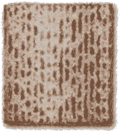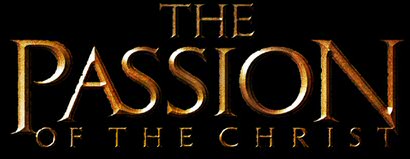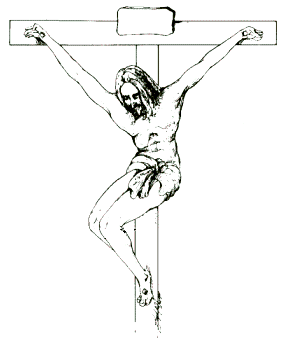Mel Gibson's The Passion of the Christ
Webmaster's
Review
and Background Comments
| Learn more about Passover: www.MessianicSeder.com |
|---|
Epilogue: As indicated below, The Passion of the Christ was a movie sensation when first released. However, the next Easter it was again shown without being
|
|
11. |
||
|
2. |
12. |
||
|
3. |
13. |
||
|
4. |
14. |
||
|
5. |
15. |
||
|
6. |
16. |
||
|
7. |
17. |
||
|
8. |
18. |
||
|
9. |
19. |
||
|
10. |
20. |
I have seen The Passion of the Christ three times.
Let me begin by saying that I think the film is awesome!
Understand that the film is not intended to be entertainment. It is not intended to be a detailed account of Christ's life or his message or his ministry. It is specifically about the twelve hours preceding his death. The film ends with the resurrection. Most Christians are annoyed that the entire resurrection scene is only about one minute long.
THIS MOVIE IS DEFINITELY NOT APPROPRIATE FOR PRE-TEENS!
The one major flaw of the film is that unless you know the entire story in advance, the video will make no sense at all. This is definitely not a film to see just out of curiosity because it received a lot of media attention. If you are not knowledgeable about the Gospels, I suggest you first rent the video The Gospel of John or buy The Visual Bible: Book of Matthew used through Amazon. I saw John and it is excellent. I have not seen Matthew but hear it is also quite good.
For the general public, I think the film would work much better if it began with some general scenes from the time period (a cohort of Roman soldiers traveling along a road, people in a marketplace, fishermen on the Sea of Gallilee, etc.) while a narrator quickly explains that two thousand years ago a Jewish preacher was born in Israel, which was then under Roman rule. He claimed that he was the Messiah foretold in the Jewish scriptures and that he was the eternal Son of the God who delivered Moses and the Israelites out of Egypt many centuries earlier. Christians believe that God put the sins of all mankind upon this preacher and punished mankind's sins by punishing him. The preacher claimed that he had voluntarily agreed to take the punishment, a punishment to the death.
The film is about the execution he voluntarily accepted and did not resist.
Having completed his sacrificial work, three days later he arose from the dead.
On this, let me first point out that on a weekly basis I have attend a Messianic synagogue in Dallas since December 1999 and also a Reform Jewish (non-messianic) congregation since March 2003. Because of the extensive history of violence against Jews in various Christian countries, when the film came out American Jews were quite concerned that the film would incite anti-semitism, however, it did not.
The film quotes Jesus saying that no one was taking his life against his will, that he was laying it down voluntarily and would take it up again voluntarily.
Although the beating of Jesus was much more severe than usual, between 1 A.D. and around 150 A.D., the Romans crucified about one million Jews, including hundreds of thousands of women and children. This was the Holocaust of the First Century, and Jesus went through it.
Strictly from a movie industry business perspective, the film was not simply a success, it was a mega-blockbuster!
The following statistics are prior to May 2004. The 2004 year set many new records, with Shrek 2, Spiderman 2, a Harry Potter movie, etc.
- It
had the highest
midweek opening gross ever,
beating out Lord of the Rings--Return of the King.
- Gross
receipts information is from www.the-numbers.com.
- Gross
receipts is one of the main standards the movie industry
uses to determine success of a movie.
- Because
of pre-release controversy about the movie, to avoid
being accused of exaggerating receipts the film's distributors
originally underestimated the opening receipts slightly.
Hence, some early reports indicate that the movie
had the second-highest opening gross.
- For you movie history buffs: The Passion broke the record on the same night that Return of the King became the first movie to sweep the Oscars.
- Click
here
for
why Gross Reciepts presents a skewed view.
- It
was the highest-grossing
R-rated film ever.
- It
was the highest-grossing
subtitled film ever.
- It
had the highest
weekend gross for
both February and
March.
- It
had the second-highest
opening weekend gross per theater (for movies in wide release).
- It
was the 3rd
fastest movie in history to reach $350 million in total U.S. receipts.
- It
was the 3rd
fastest movie in history to reach $200 million in total U.S. receipts.
It hit $200+ million in 12 days. One film hit $200 million in 9 days, two in 11 days and two others also in 12 days.
- It
was only the 4th
movie to hit $300+ million gross receipts in the United States theaters
in its first month.
- It
was only the 5th
movie to gross $300 million dollars in its first month.
- It
was only the 8th
movie to gross $100 million dollars in five days or less.
- It
was only the 8th
movie to gross $350 million
in total U.S. receipts.
- It
was in the top 10
movies of all time in total
U.S. receipts.
- It was only the 18th movie in history to gross $300 million in total U.S. receipts.
|
|
Re Gross Receipts: Inflation-adjusted numbers are not available, which greatly skews the list in favor of recent movies. The only movie prior to 1993 that hit $300 Million in its initial run was ET: -The Extra-Terrestrial and only two other pre-1993 movies, Star Wars and Return of the Jedi, have grossed $300 Million in U.S. theaters since release.
The film is extremely gruesome and the violence is very graphic--it depicts the beating of Christ very accurately. Roman crucifixion was intended to be slow, cruel public torture, to intimidate the masses into submission. Jesus' crucifixion was far more brutal than most. According to the Gospels he was beaten up several times in addition to being scourged (whipped). He also had a crown of thorns pressed into his head. I have studied the medical details of crucifixion in depth and even so it was quite a shock to see a realistic depiction.
I want to point out that I have not be seen the film for a fourth time even though I bought the video. The film is fully intended to be sickeningly gruesome and extremely graphic in its violence. The third time I saw it, the violence did not particularly bother me. Frankly, that fact is somewhat frightening!
What particularly comes across in the film is the extreme cruelty of the Roman soldiers. You can clearly see the "jocks beating up a geek" atmosphere that developed.
The way Rome is generally portrayed in World History courses, we tend to think of it as sophisticated, but the movie makes it clear that a lot of their actions were barbaric.
The movie does contain some historical errors. However, matters incorrectly depicted generally are in agreement with common beliefs among Protestants and Catholics, which is why they slipped through.
The Last Supper was a Passover Seder. Christians generally have a grossly distorted view of Passover because they associate it with the Crucifixion. Passover is Jewish Independence Day. Like American Independence Day, Passover is a time of great rejoicing—it is a remembrance of when the Jewish people were delivered out of slavery. In fact, the Jewish Ten Commandments begin, "I am the Lord your God who brought you out of Egypt, out of the house of slavery. You shall not have other gods before me."
One of the reasons the Romans were willing to crucify Jesus was that during Passover the population of Jerusalem swelled to five times its usual population. The last thing they wanted was a rabbi being proclaimed leader of a new Jewish kingdom, with millions of Jews available to possibly join a revolt.
UNLEAVENED BREAD IS EATEN AT PASSOVER.
 The
movie shows Jesus and his disciples eating leavened ("raised") bread
at a Seder. To Jews, Passover is a religious ceremony.
Such errors turn off many Jews when Christians try to tell them the Good News
of Jesus. Imagine someone trying to get you to accept his religion and he says,
"I've studied about your Christian 'Communion', where you eat bread
and drink milk." Also, matzoh
is full of messianic symbolism.
The
movie shows Jesus and his disciples eating leavened ("raised") bread
at a Seder. To Jews, Passover is a religious ceremony.
Such errors turn off many Jews when Christians try to tell them the Good News
of Jesus. Imagine someone trying to get you to accept his religion and he says,
"I've studied about your Christian 'Communion', where you eat bread
and drink milk." Also, matzoh
is full of messianic symbolism.
The dialog is entirely in Aramaic and Latin. In fact, most upper-class Romans could read and speak Greek fluently and Greek was an official language of the eastern half of the Roman Empire. Greek was much more widely used than Latin in that area. Of course, since the audience doesn't know Aramaic or Latin or Greek, the actors could have been speaking Yiddish and Swahili and it would work just as well!
ERRORS REGARDING THE CRUCIFIXION
Contrary to common belief, a substantial amount of highly detailed medical data is known about crucifixion in general and the execution of Jesus in particular. Large amounts of information are based on the Shroud of Turin. Although it cannot be proved that the Shroud is the burial cloth of Jesus, scientists and physicians are in agreement that somehow the Shroud contains a photographic image, not a drawing or painting and that whoever was in that Shroud was executed in exactly the same manner as Jesus, including things like the crown of thorns and the scourging with a Roman flagrum. (The whip that dug into the table in the movie.)
Many people believe that in 1988 the Shroud was conclusively proved by radiocarbon dating to be a medieval forgery. However, in 2005 it was conclusively proved that the samples that were radiocarbon dated were taken from a previously unknown repair that had been performed around 1300 A.D. Hence, although the radiocarbon datings were accurate, the samples dated were not from the original Shroud.
In fact, so much is known about crucifixion that the following article was published in 1986 in the prestigious Journal of the American Medical Association.
|
JAMA Journal of
the On the Physical Death of Jesus Christ Vol 255. No. 11, March 21, 1986Article
by |
|
ONLY THE CROSSBEAM WAS CARRIED.
The movie shows the two thieves being tied to crossbeams but Jesus carries the entire Cross. That's not possible—according to the JAMA article, the entire Cross weighs about 300 pounds. The crossbeam alone weighed about 20 kilos (44 pounds).
The movie shows Jesus with whip gashes and blood all over but shows the two thieves only with blood dripping down their arms from the nails in their wrists. Under Roman law, scourging was a legal prerequisite of crucifixion for men but not for women. All men were flogged prior to crucifixion. Major differences between the crucifixion of Jesus and a typical crucifixion were that he was beaten up three times, hit with sticks ("caning"), was dragged around all night without sleeping, and had a crown of thorns put on his head.
Of course, the Crucifixion scene would be much less dramatic if the two thieves were also shown full of blood and whip marks.
PEOPLE WERE STRIPPED NAKED BEFORE FLOGGING.
Roman crucifixion was intended to be slow, brutal degrading and intimidating torture, to demonstrate the power of Rome. The "loincloth" is an invention of the medieval Catholic Church. People were stripped naked before being flogged and then forced to carry the crossbeam. There is some biblical evidence that Jesus may have been clothed while carrying the Cross.
GIBSON TONED DOWN THE CRUCIFIXION SCENE!
The movie shows Jesus' arms being tied at the elbow. Although that was sometimes done, that was not normal practice and there is no historical evidence indicating that Jesus' arms were tied.
As detailed in the JAMA article, the nails went through nerves without severing them. Because of this, standing was extremely painful. The person would stand in a "T" position with arms outstretched and take a few quick breaths before the foot pain became overwhelming, and then he would slump into a bent-knees "Y" position, with the weight on the wrists. However, that position puts a huge strain on the chest muscles, making it almost impossible to breathe. Within 30-60 seconds, the person has to stand again. Hence, the person literally would be constantly moving up and down.
Historical records indicate that an average crucifixion victim could survive up to three days constantly moving up and down. The reason for breaking the legs was that it prevented the person from standing. Experiments have been done with strong, young healthy volunteers who were tied to crosses by their wrists, with no foot support. They all stopped breathing within 12 minutes (and were immediately taken down and revived).
Keep in mind that because the nails pinch nerves, every time the person moves it is like getting shocked with an electric cattle prod in both arms and both legs.
Also, crosses were made of rough wood and the person's scourged back with open wounds was pressed against them. Every time the person moved, the rough wood would aggravate the wounds.
For cinematic reasons, no movie has ever shown this "Y & T & rough wood" scenario. There is no way to convey the feeling of nerves being pinched. Also, having the central character constantly moving up and down would destroy the dramatic effect.
Of course, in the movie the final spear thrust was overly dramatized. Blood and clear colorless body fluids (not water) would ooze out, not spurt. Regarding the spear thrust, one ancient source indicates that it was not done to assure death—Roman executioners were experts at killing and definitely knew when someone was dead.
Usual Roman practice with crucified bodies was either to leave them on the cross to rot and be eaten by birds and maggots or to take them down and throw them by the side of the road, to be eaten by wild dogs. In cases such as Jesus, where relatives got permission to take the body and bury it, the spear thrust was a final Roman insult and desecration.
Like all great works of art, the film has a number of subtleties that are not obvious to the casual viewer. These are "artistic license" touches added by Gibson, i.e., there is no evidence they actually occurred. Here are some I particularly liked:
|
|
1. |
In the opening scene, when
Jesus is asked, "Who are you?" he answers in Hebrew but
his answer is not translated in the subtitles. His answer is, "Ben
Elohim", which means "The Son of God." |
|
|
2. |
When Jesus is arrested,
Mary can just feel that something terribly bad has begun.
She says to her companion in Hebrew, "Ma
nish-ta-nah ha-lai-la ha-ze mi kol ha-lei-lot." (In transliteration,
a, e, i, o, u are pronounced as in Spanish or French.) |
|
|
3. |
The drop of water is not
a raindrop, it is a teardrop from heaven. |
| TOP | QUESTIONS | HOME |
|---|---|---|
| BECOME A CHRISTIAN | ||
(c) 2004-2015 by Rick Reinckens
last updated
2/28/2015
WhatTheBibleTeaches.com HubbleSpacePhotos.com RomanCatholicTeachings.com
DidGodLie.com MessianicPassover.com MessianicWorship.com MessianicOutreach.com


